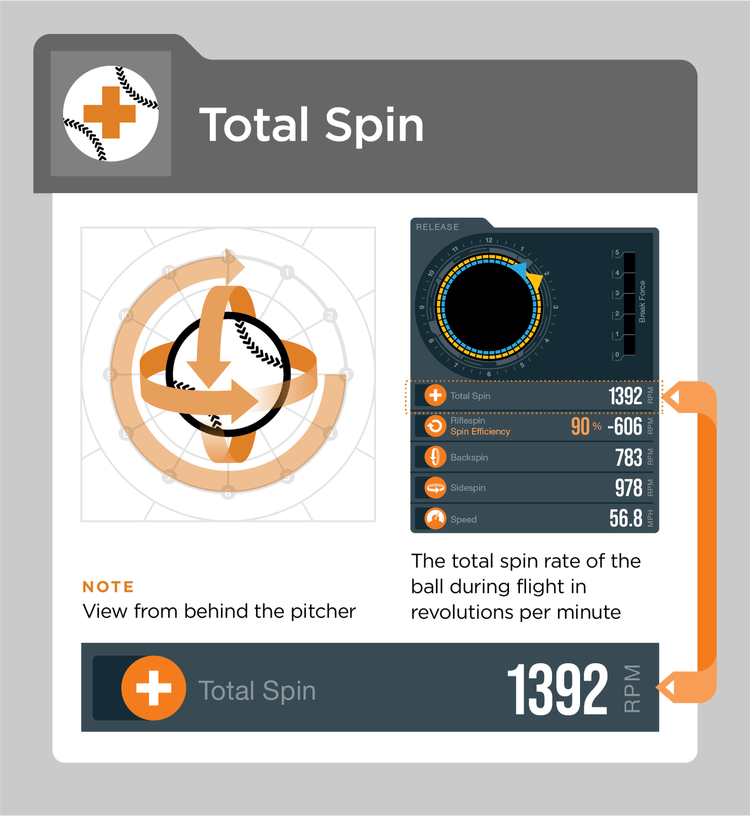Fastball: Spin Rate

The pitchLogic STUFFpL system can recommend up to three adjustments for each pitch in your arsenal. We recommend picking one at a time to focus on, setting a goal, and repeating the STUFFpL assessment for updated recommendations once you reach your goal.
One recommendation you might receive for fastballs is an adjustment to your Spin Rate. Learn what Spin Rate is, how it affects your pitch, why pitchLogic might recommend a change, and how to make an adjustment to your Spin Rate below!
Spin Rate (also referred to as Total Spin) is the total revolutions per minute (rpm) on the ball. This is a combination of Backspin/Topspin, Sidespin and Rifle Spin. Total Spin is not a simple addition of the various types of spin. You can expect the Total Spin on your fastball to increase as your speed increases. For reference, the average Total Spin rate in an MLB game is 2200+ for a fastball.
For the math majors Total Spin = sqrt(Backspin^2 + Sidespin^2 + Rifle Spin^2)
Increasing Spin Rate will increase movement toward your Spin Direction. Likewise, decreasing Spin Rate will decrease movement.
Spin Rate does not have any direct effect on Spin Direction, Speed, Spin Efficiency, or Arm Slot. It can be possible to adjust Spin Rate within a small range of values without changes to other pitch factors. Larger changes in Spin Rate can be difficult to achieve (especially for fastballs), and pitchLogic will only recommend a Spin Rate that falls within the range of values you threw within your session.
pitchLogic is very conservative about recommending Spin Rate changes for fastballs. There is no consensus on how some pitchers generate much more spin than others, and it can be difficult to increase your Spin Rate. However, if you are inconsistent with your Spin Rate, pitchLogic may recommend a Spin Rate goal within the range of values you have already thrown.
Four-seam fastballs will most often benefit from an increase in Spin, which leads to an increase in Movement. In particular, most (but not all) four-seam fastballs have a more vertical profile and will benefit from an increase in Vertical Movement. This is often described as ‘ride’, ‘hop’, or ‘life’.
Cutters can benefit from both an increase in Vertical Movement and glove-side Horizontal Movement with a higher Spin Rate. Since Cutters encompass such a wide range of movement profiles, they may sometimes benefit from a lower Spin Rate instead.
Two-seam fastballs will sometimes benefit from an increased Spin Rate, which can help by increasing Horizonal Movement (also known as arm-side ‘run’). Some two-seam fastballs will benefit from a lower Spin Rate, which reduces Vertical Movement for more ‘sink’. pitchLogic’s STUFFpL system can help by recommending which is more likely to benefit your particular pitch.
To maximize your Spin Rate, make sure the pads of your fingertips are in contact with the seams at release point. It may not be intuitive, but your fingers tend to roll off the ball as you release. The ideal grip location may be further back than you expect. As the ball comes off your fingertips, pull down on the seams which should generate a higher Spin Rate.
You may be able to lower your Spin Rate slightly by separating your index finger and middle finger.
pitchLogic will only recommend a Spin Rate that you achieved some of the time during your session. Look for inconsistencies in your grip, mechanics, and release to see what may be causing variations in Spin Rate.
